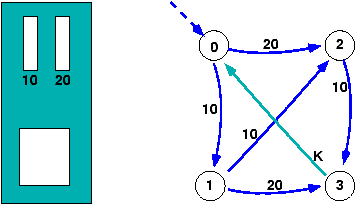
Planche 1 |
Planche 2 |
Planche 3 |
Planche 4 |

Planche 5 |
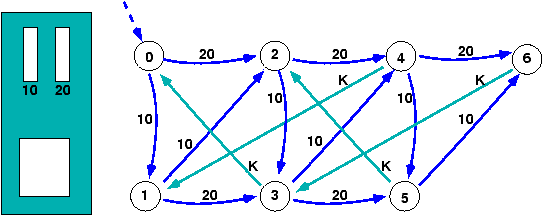
Planche 6 |
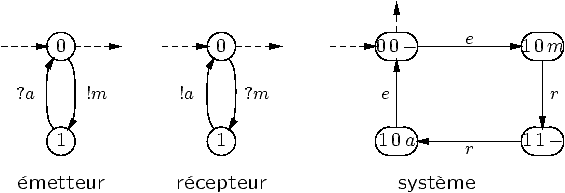
| !m envoi du message m | ?m lecture du message m | |
| ?a lecture accusé de réception | !a envoi de l'accusé de réception |
Planche 7 |
|
|
Planche 8 |

Planche 9 |
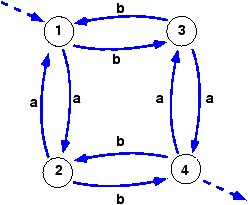
Planche 10 |
| S est un alphabet donné, | |
| Q est un ensemble fini d'états, | |
| q0 Î Q est l'état initial, | |
| F Ì Q est l'ensemble des états finaux, | |
| d : Q × S ® Q est la fonction de transition |
| d(q, e) = q | |
| d(q, aw) = d(d(q,a), w) |
| T(A) = {w | d(q0,w) Î F} |
Planche 11 |
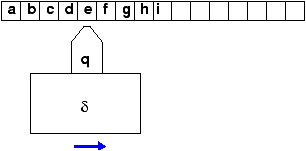
Planche 12 |
Planche 13 |
| d(q, e) = {q} d(q, aw) = |
|
d(q',w) |
| T(A) = {w | d(q0,w) Ç F ¹ Ø } |
Planche 14 |
 |
 |
| (non déterministe) | (déterministe) |
Planche 15 |
Planche 16 |
Planche 17 |
|
|
|
|
|
|
Planche 18 |
| S est un alphabet d'entrée, | |
| G est un alphabet des symboles de la bande (S Ì G), | |
| B Î G - S est le symbole blanc, | |
| Q est un ensemble fini d'états, | |
| q0 Î Q est l'état initial, | |
| F Ì Q est l'ensemble des états finaux, | |
| d : Q × G ® Q × G × { gauche, droite } est la fonction de transition |
Planche 19 |
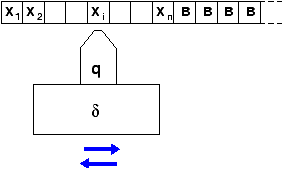
| d (q, X) = (q', Y, droite) | Þ | (u, q, Xv) ¾® (uY, q', v) |
| d (q, B) = (q', Y, droite) | Þ | (u, q, e) ¾® (uY, q', e) |
| d (q, X) = (q', Y, gauche) | Þ | (uZ, q, Xv) ¾® (u, q', ZYv) |
| d (q, B) = (q', Y, gauche) | Þ | (uZ, q, e) ¾® (u, q', ZY) |
| T(M) = {w | wÎ S*, (e, q0,w) ¾®* (u,q,v), q Î F } |
Planche 20 |
Planche 21 |
Planche 22 |
Planche 23 |
Planche 24 |
| Il existe des langages non récursivement énumérables. |
Planche 25 |
| Il existe des fonctions non calculables. |
Planche 26 |
|
|
| Il n'existe pas de machine de Turing testant |
| l'arrêt de toute machine de Turing. |
Planche 27 |
o3.f() termine ssi o3.f() ne termine pas !!Planche 28 |
| Thèse [Church, 35] Tous les modèles de la |
| calculabilité sont équivalents. |
Planche 29 |
This document was translated from LATEX by HEVEA.